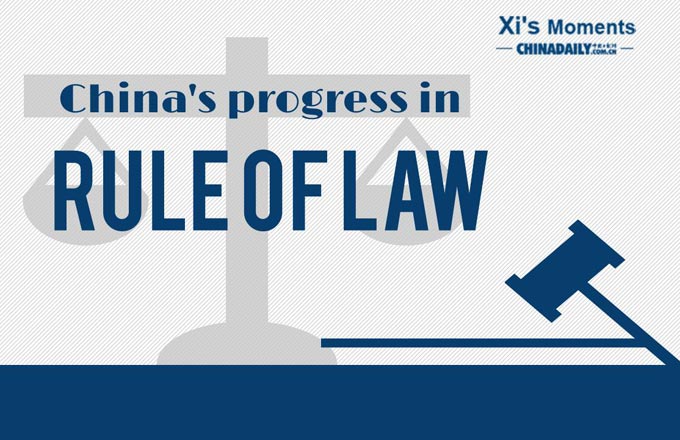Village at the heart of New China
Editor's note: As the Communist Party of China (CPC) celebrates its 90th anniversary on July 1, China Daily reporter Cheng Anqi visited Xibaipo, a small village in Pingshan county, Hebei province. From May 1948 to March 1949, the village was the headquarters for the Chinese leaders who eventually reshaped the country.
In 1949, when Mikoyan Anastas Ivanovich (1905-1970), a special commissioner sent by the Political Bureau of the Soviet Union Communist Party, made a secret visit to Xibaipo village in Hebei province, he was so curious about everything that he stopped at several farmers' cottages at the risk of exposing his identity.
He even shrugged off the advice of his Chinese interpreter Shi Zhe who tried to remind him that his visit should be kept confidential.
"How is it possible to keep it secret in such a remote place?" he said.
From May 1948 to March 1949, the Communist Party of China chose this 100-household village as the headquarters of its Central Committee and Chinese People's Liberation Army (PLA).
In 1951, when they met again, Mikoyan remarked to Shi Zhe that no foreign media reported his visit. This showed how much the masses supported the CPC, as they helped keep his first visit a secret, Mikoyan said, according to an article by researcher Zheng Weican in the fifth issue of the journal Corpus of Party History in 2004.
The once unpretentious, out-of-the-way Xibaipo is now a national base for patriotic education and is rapidly becoming a booming tourist attraction, as the 90th anniversary of the Communist Party of China arrives on July 1.
Today tour buses shuttle back and forth in the beautiful valley where the Xibaipo Memorial Museum was built to commemorate this revered site.
The village was a military location of strategic importance in North China in the late 1940s.
The location made it possible to either withdraw into the mountains or to advance on the cities.
Although the original site was submerged when Gangnan Reservoir was constructed, the village was recreated nearby in 1977 and opened to the public in 1978.
Cypress trees lead to sun-dried mud brick houses enclosed by winding walls. The white-limed single-story cottages recreate the headquarters and former residences of CPC leaders Mao Zedong, Zhou Enlai, Zhu De, Liu Shaoqi and Ren Bishi.
In the east yard are the four hole-in-the-wall war rooms where the Central Committee of the Communist Party of China commanded the three great campaigns that decided the future of the nation.
The Liaoning-Shenyang Campaign, the Huaihai Campaign and the Pingjin Campaign, began on Sept 12, 1948 and lasted 142 days. They defeated more than 1.54 million Kuomintang troops, most of whom surrendered to the PLA, thus ending Kuomintang dominance in North and Northeast China.
Zhou Enlai (1898-1976), then vice-chairman of the Party's Central Committee, said that, "It might be the smallest command center in the world. We have delivered neither money nor people, only telegrams from this shabby room, and we defeated the Kuomintang."
Mao's house was close to the south side of the mountain. It was in this cottage that he worked day and night for China's liberation.
The site is divided into two courtyards, with Mao's bedroom and his study in the backyard, and a guardhouse in the front yard with a pigsty and millstone.
When Mao, chairman of the Party's Central Committee, first arrived at Xibaipo on May 26, 1948, there were those who wanted to remove the pigsty and millstone, but Mao said no because the farmers would need them.
During summer days, under catalpa trees, Mao and other leaders would sit by the millstone, discussing military affairs.
The east side of the northern house is where Zhou had his office. Here he would listen to reports from the front line, check military information, read documents and draft telegrams.
Liu Shaoqi's office was not only the council chamber, but also the bureau of the Central Working Committee. During that period, it was the venue for many important meetings. In the northwest corner is the wooden box in which Liu kept his manuscripts, such as the Report on the National Land Conference held in 1947.
The command post set up in Xibaipo was the last one in a rural area before the People's Liberation Army liberated the whole country.
In the museum, there is a humble conference site, which has only a simple cloth shed as the rostrum, with seven benches placed opposite it.
However, it was the news released from the National Land Conference that mapped out China's first Summary of Land Laws and encouraged Chinese farmers.
The victory of the three major campaigns relied on the farmers. The key for mobilizing the masses was to solve the land issue. The movement enabled farmers to be the owners of the land for the first time.
There is a plain trolley attracting visitors. Speckled with scars on the edge of the wheel, it is an ordinary wheelbarrow made of wood, simply made.
This was one of the transports used by the people delivering food and weapons to the army on the front line during the Huaihai Campaign.
Marshal Chen Yi (1901-1972) owed the victory of the War of Liberation to the plain trolleys of the masses. There were more than 1 million farmers supporting the army, which meant 10 farmers supported one PLA soldier on average.
They used 290,000 stretchers, 830,000 wheelbarrows, 620,000 livestock and 160,000 shoulder poles.
- IEA says China remains leader of renewables
- Courier company fined for not checking parcels
- Documentary short film shows China's development via television
- Smaller, low-calorie mooncakes popular as Chinese avoid extravagance, overweight
- China hosts 461m domestic tourists during holiday






















